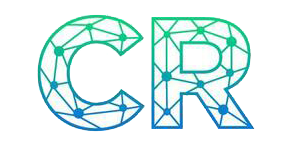When DNA testing company 23andMe announced last week that it would file for bankruptcy, a wave of speculation followed.
What would happen to the troves of sensitive genetic data from over 15 million people worldwide that it had collected over the years?
On Thursday, layer one blockchain developer Sei Network announced on X that its governing body, the Sei Foundation, was bidding to acquire 23andMe.
The acquisition would give users control of their genetic data through encrypted, confidential transfers, allowing individuals to decide how their data is accessed and monetized, according to the Sei Foundation.
The Sei Foundation called the move “the boldest DeSci bet yet.”
“We believe user data sovereignty is a matter of national security,” Sei Network wrote. “When an American biotech pioneer faces bankruptcy, personal genomic data of millions becomes vulnerable to parties that may not share the same values of transparency and open access.”
Launched in 2021, Sei Network is an open-source Layer 1 blockchain for trading.
It has a built-in order-matching engine, fast finality via Twin Turbo consensus, and market-based parallelization to run decentralized finance applications, NFT collections, and exchanges.
“Traditionally, health data is controlled by a small set of centralized actors. We want to put control back into the hands of those it belongs to,” the Head of Decentralized Science at the Sei Foundation, Eleanor Davies, told Decrypt.
“Our high-performance blockchain is designed to handle the massive scale required for 15 million users’ genetic datasets while ensuring privacy and security.”
Data, a top priority
While she did not go into details on the data architecture, Davies said Sei would create a secure platform that encrypts all sensitive data, and users can choose when to share their information.
“It would likely involve a hybrid approach using both public and private keys,” Davies said. “This allows the system to handle the massive size of genomic datasets while leveraging blockchain for data sovereignty and permissions.
“Sei will also partner with best-in-class industry experts and security specialists to ensure that data integrity is maintained,” Davies added.
Since the 23andMe acquisition announcement on March 27, the Sei token has slid nearly 18%, from $0.21 to $0.17.
“We take control over your data incredibly seriously, and view it as a national security issue, Davies said.
She added that several “key mechanisms” can be deployed, where users can opt in to share specific data, with the ability to select when and where their data is used while participating “directly in the benefits.”
Another hype or legit use case?
Still, questions remain about how the Sei Foundation could realistically deliver on its promise.
Blockchain ventures are often known for grand ambitions, but is this a transformative moment or more techno-utopian hype?
Founded in 2006, 23andMe is a direct-to-consumer genetics company offering at-home DNA testing kits to help users explore their ancestry, health traits, and genetic risks.
In recent years, declining demand for DNA testing and difficulty generating repeat customers, among other issues, have contributed to financial struggles and operational setbacks.
Not everyone, including Professor Ahmed Banafa, a technology expert and engineering professor at San Jose State University, is convinced that blockchain is the right solution for genomic data storage.
“There are a few problems,” Banafa said. “Number one: the size of the blockchain can’t handle the volume of human DNA. So they have to get creative.”
He noted that one workaround is to encrypt the DNA data and store only the encryption key on the blockchain.
“Another concern is access,” he added. “If it’s my data, I should control who sees it. Smart contracts can help by letting users grant or revoke access instantly—no forms, no waiting.”
Hurdles to success
Banafa also pointed to the legal and regulatory hurdles that Sei would have to overcome.
“Laws like the California Consumer Privacy Act, the Genetic Information Protection Act, and possibly HIPAA could come into play,” he said. “Even if HIPAA doesn’t apply to direct-to-consumer services, government oversight is still very possible.”
A week before 23andMe’s bankruptcy announcement, California Attorney General Rob Bonta issued a consumer alert on the company’s financial issues.
The alert reminded customers that they have the right to have their genetic data deleted. Other Attorney Generals from New York, Maryland, Alabama, and Washington, D.C., also issued consumer alerts about 23andMe.
Banafa noted that protecting user data would require a closed system designed so that only authorized individuals could retrieve sensitive information.
But even with strict controls in place, trying to cram massive datasets into limited on-chain space isn’t practical, especially at scale.
“Storing gigabytes of data in a small block doesn’t make sense, especially with millions of users,” he said. “It would be too slow. They’ll need a smart system—access codes, added security—where your encrypted data lives in decentralized storage, using something like SHA-256.”
Banafa also emphasized security as a significant concern, highlighting blockchain bridges as a potential attack vector in the blockchain ecosystem.
In 2022, the Ronin Network was hacked when attackers exploited a vulnerability and stole over $600 million in digital assets from the Ethereum sidechain.
“The core technology is secure,” he said, “But these bridges are weak points, and hackers have exploited them to steal billions in crypto.”
Edited by James Rubin and Sebastian Sinclair
Daily Debrief Newsletter
Start every day with the top news stories right now, plus original features, a podcast, videos and more.







